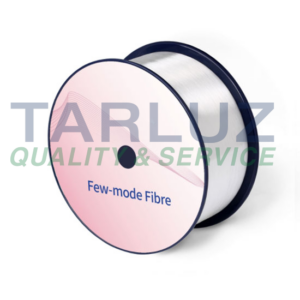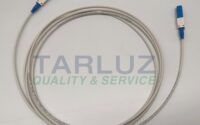What is Few-mode Fiber (FMF) Products?
Introduction
In the world of optical communications, fiber optics play a crucial role in enabling high-speed data transmission. While single-mode fiber (SMF) and multi-mode fiber (MMF) are widely used, Few-mode Fiber (FMF) has emerged as a promising solution for next-generation optical networks. But what exactly is FMF, and how is it used in modern products?

Understanding Few-mode Fiber (FMF)
Few-mode fiber is a specialized type of optical fiber designed to support a limited number of guided modes—typically between 2 and 20 modes—unlike single-mode fiber (which supports only one mode) or traditional multi-mode fiber (which supports hundreds).
FMF enables space-division multiplexing (SDM), a technique that increases data capacity by transmitting multiple independent signals through different spatial modes within the same fiber.
Key Features of FMF Products
FMF-based products are engineered to optimize performance in advanced optical systems. Some key characteristics include:
Controlled mode count: Supports a few spatial modes to minimize modal dispersion while enabling SDM.
Low differential mode delay (DMD): Ensures minimal delay differences between modes for stable transmission.
Compatibility with MIMO-DSP: Works with multiple-input multiple-output digital signal processing (MIMO-DSP) to separate and recover overlapping modes.
High data capacity: Enables terabit-level transmission by multiplexing signals in different modes.
Applications of FMF Products
FMF is gaining traction in several high-performance optical applications, including:
High-Capacity Data Centers – Enhances bandwidth efficiency for short-reach interconnects.
Long-Haul Optical Networks – Supports mode-division multiplexing (MDM) to increase transmission capacity.
Optical Sensing & Imaging – Used in medical imaging and distributed sensing due to its mode-selective properties.
Quantum Communications – Facilitates multi-channel quantum key distribution (QKD).
Leading FMF Products in the Market
Several companies and research institutions are developing FMF-based solutions, such as:
Few-mode Erbium-Doped Fiber Amplifiers (FM-EDFAs) – Amplify signals in multiple modes simultaneously.
Mode-Selective Photonic Lanterns – Convert between single-mode and few-mode signals efficiently.
FMF-based SDM Transceivers – Enable high-speed parallel data transmission.
In Conclusion
Few-mode fiber (FMF) products represent a significant advancement in optical communication technology, offering higher capacity and efficiency compared to traditional fibers. As demand for faster and more scalable networks grows, FMF-based solutions will play an increasingly vital role in next-gen optical systems.
Explore more: For more information on Few-mode Fiber and related products, visit TARLUZ.com or contact our experts for personalized advice.
Related article below:
Understanding the Distance Limitations of Multimode Fiber in Data Centers


